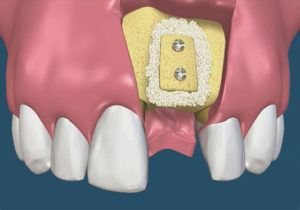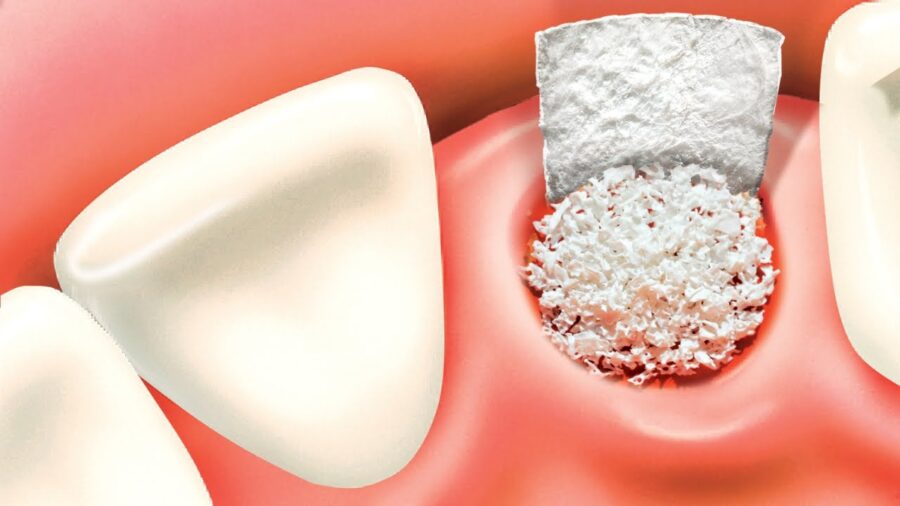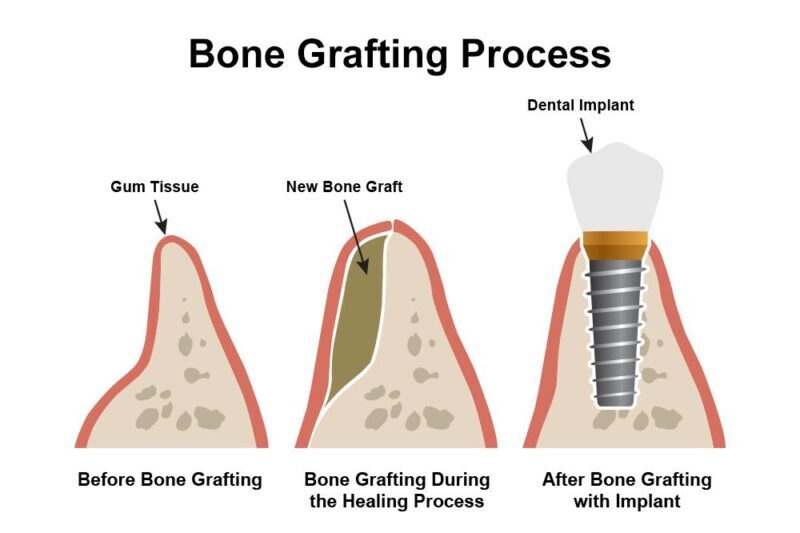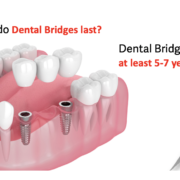Bone grafting is one of the proven methods to promote bone growth and healing. In cases of small bone defects or non healing surgical sites, this procedure makes it possible for patients to recover function and a normal appearance of their face or body. The process involves the use of 3D imaging software to plan the best way to perform this type of procedure in order to maximize its effectiveness and reduce its risks. During a bone graft, your surgeon inserts a new piece of bone in the place where a bone needs to heal or join. The cells inside the new bone can then seal themselves to the old bone.
Why might I need bone grafting?
You might need bone grafting to promote bone healing and growth for a number of different medical reasons. Some specific conditions that might require a bone graft include:
- An initial fracture that your healthcare provider suspects won’t heal without a graft
- A fracture that you previously did not have treated with graft and that didn’t heal well
- Diseases of the bone, like osteonecrosis or cancer

- Spinal fusion surgery (which you might need if you have an unstable spine)
- Dental implant surgery (which you might need if you want to replace missing teeth)
- Surgically implanted devices, like in total knee replacement, to help promote bone growth around the structure
- These bone grafts can provide a framework for the growth of new, living bone. Hips, knees, and spine are common locations for bone grafting, but you might need bone grafting for a different bone in your body.
Talk with your healthcare provider about whether you want to use a bone from a donor or a bone from elsewhere in your body. If you use your own bone, you will have to have extra surgery to remove this bone. You won’t need this if you use donated bone, but the donated bone has its own small risks. Talk with your healthcare provider about what makes sense for you.
What is computer-aided grafting?
Computer-assisted bone grafting or CABG is a technology that enables a precise, customized grafting procedure thanks to the use of pre-operative 3D imaging and planning software. CABG allows the surgeon to visualize and plan each step of the procedure in a virtual setting before actually operating on the patient.
This enables the surgeon to reduce the risk of bone grafting complications, including blood loss and infection. It also allows for a more precise grafting procedure, which means a faster patient recovery. Computer-assisted bone is used with a variety of bone grafting procedures. Including iliac crest, femoral iliac crest, and tibial iliac crest grafting.
How does computer-aided bone grafting work?
Before the surgery, the surgeon will use 3D software to plan the procedure. This enables the surgeon to visualize the surgical site in a virtual, computer-generated setting. This allows the surgeon to predict potential problems and find the best way to avoid them. During the procedure, the surgeon will use 3D software to guide the surgical tools. This helps the surgeon perform a precise procedure, minimizing the risk of complications.
Benefits of computer-aided bone grafting
Computer-assisted bone grafting has a number of benefits. Most importantly, it helps the surgeon visualize and plan the procedure in advance. This enables the surgeon to select the best grafting material and make sure that the patient will benefit from the highest possible healing rate. At the same time, the surgeon will minimise the risk of complications and blood loss. CABG allows the surgeon to choose the best approach for each patient and each type of bone grafting procedure. While the procedure is usually not painful, it can sometimes be uncomfortable.

Who should get computer-aided bone grafting?
Computer-assisted grafting is recommended for patients who have large or multiple bone grafting defects. It is also recommended for patients who have certain medical conditions. That make them more susceptible to complications. However, CGF – Computer-Assisted Grafting is not suitable for all types of bone.
Disadvantages of computer-aided bone grafting
The most serious risk associated with CGF is infection. Computer-assisted grafting may increase the risk of infection because it involves opening the patient’s body and introducing grafting materials. Other potential complications include bleeding and damage to the surrounding tissue. Although rare, these complications can lead to serious long-term health issues. It may not suitable for everyone.

This procedure may not be an ideal treatment for patients who have a small bone defect or a non-healing surgical site. CGF is not suitable for individuals who have osteopenia or osteoporosis. This procedure may also not be suitable for patients who are at risk of developing blood clots, are experiencing excessive bleeding, or have other serious health problems.
Is computer-assisted bone grafting right for you?
Computer-assisted bone grafting is suitable for many patients. Before undergoing this procedure, you should check with your doctor to make sure that it is appropriate for your situation. Your doctor may recommend this procedure if you have a large bone defect or a nonhealing surgical site. You may also have a higher risk of complications that computer-assisted grafting can help to prevent.
You should also be sure to tell your doctor about any pre-existing conditions that may make you more susceptible to complications. At the same time, you should be sure to inform your doctor if you have osteopenia or osteoporosis. This type of bone grafting procedure may not be right for you.






